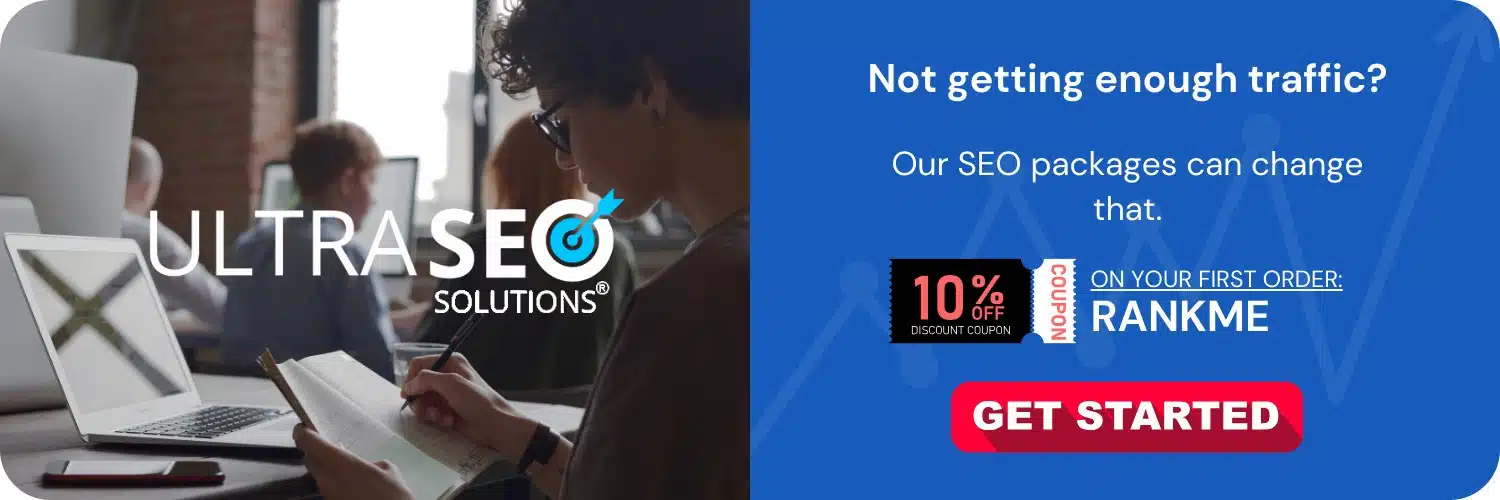
Search Engine Optimization (SEO) is a powerful tool for improving the visibility of your website in search engine results, driving more traffic to your site. But that’s just the first step. The ultimate goal of SEO isn’t just about getting visitors to your site; it’s about converting that traffic into customers and leads. To use SEO to improve conversion rates, start by ensuring your site ranks for relevant, high-intent keywords, then optimize your site’s user experience to guide visitors towards the desired action, whether it’s making a purchase, signing up for a newsletter, or completing a contact form.
The Role of SEO in Conversion Optimization
It’s common knowledge that SEO is vital for driving website traffic, but its role in conversion optimization is equally significant. High-quality SEO practices help attract visitors who are actively looking for products or services that you offer. By targeting those with a specific purchasing intent—made evident through their searched queries—you set the stage for a higher conversion rate. Here’s an in-depth look at how to harness SEO to boost those important conversions.
Keyword Research and Intent
Everything in SEO starts with keyword research, and when it comes to conversions, it’s essential to focus on the intent behind the search terms. Keywords can be classified based on the user’s intent, typically falling into informational, navigational, transactional, or commercial investigation categories. For conversion optimization, focus on transactional and commercial investigation keywords, as these are used by searchers ready to take action.
- Transactional Keywords: These include words like ‘buy,’ ‘deal,’ ‘discount,’ or product-specific searches. When your site ranks for these terms, you’re attracting visitors who are ready to make a purchase.
- Commercial Investigation: These are searches where a user is in decision-making mode, looking for the best option or comparing products. Phrases such as ‘best’, ‘review’, or ‘top 10’ often signal this intent.
Focus on these types of keywords, and you create pathways for high-intent visitors to find your site precisely when they’re most ready to convert.
On-page Optimization and User Experience (UX)
The UX of your website is crucial in converting visitors into customers. Your on-page elements need to not only be optimized for search engines but also designed to enhance user experience.
- Title Tags and Meta Descriptions: They should be compelling, include your target keywords, and offer a clear value proposition to encourage clicks.
- Headers: Use headers (H2, H3, etc.) to organize content, making it easier for users to scan and understand your page’s layout.
- Content Quality: High-quality, relevant content answers users’ questions and guides them towards taking action. Make sure your content speaks to the needs of your audience and aligns with their search intent.
- Call-to-Actions (CTAs): Your CTAs should stand out and provide a clear, unambiguous path to conversion. They should be action-oriented and create a sense of urgency.
- Page Speed: Page speed is a critical UX factor. A faster loading page reduces bounce rates and increases the likelihood of conversions.
- Mobile-Friendliness: With the rise of mobile search, having a mobile-friendly website is non-negotiable. A seamless mobile experience can dramatically improve your conversion rates.
Technical SEO and Site Structure
Technical SEO lays the foundation for a search engine to crawl and index your site effectively.
- Site Navigation: A clear hierarchy and navigation enable both search engines and users to find content more effectively.
- URL Structure: Simple and readable URLs with keywords can benefit both SEO and user understanding.
- Structured Data: Implementing schema markup can provide search engines with additional context and can lead to enhanced search listings, potentially improving click-through rates.
- Security: A secure website (HTTPS) can be a trust factor for searchers, thereby potentially increasing the likelihood of a conversion.
- Site Errors: Regularly monitor and fix crawl errors, broken links, and other site errors to prevent turning visitors away.
Content Marketing and Link Building
Content marketing and link building are essential for driving targeted traffic and establish authority.
- Quality Content: Creating valuable content that addresses the needs and questions of your audience can position you as an authority and build trust, a key ingredient in converting visitors.
- Internal Linking: Strategic internal linking can guide visitors through your site, increasing the time they spend on your site, and elevating the chance of conversion.
- Backlinks: High-quality backlinks from authoritative sites not only boost your SEO rankings but also bring in referral traffic that could have a higher potential to convert.
Conversion Rate Optimization (CRO) Best Practices
Beyond traditional SEO, you should be continuously testing and optimizing your website for conversions.
- A/B Testing: Regularly test different versions of your web pages to see which elements lead to higher conversion rates.
- Analytics: Use tools like Google Analytics to track where your visitors come from and how they behave on your site, allowing you to fine-tune your SEO and content strategies.
- User Feedback: Collect and analyze user feedback to understand barriers to conversion and areas for improvement.
Local SEO
If you operate a business with a physical location or serve a specific geographic area, local SEO can be instrumental in driving conversions.
- Google My Business: Keep your listing updated with the correct address, phone number, and operating hours to attract local traffic.
- Local Keywords: Use geo-specific keywords in your content and meta tags to target local customers who are more likely to convert.
- Local Link Building: Cultivating links from local businesses and directories can direct local traffic to your site that’s more conversion-ready.
Finishing Thoughts
SEO’s role in improving conversion rates cannot be overstated. By aligning your SEO efforts with your conversion goals, you can attract high-intent traffic that’s more likely to take the action you want on your website. From comprehensive keyword research to on-page optimization and technical SEO, every element should be fine-tuned not just for search engines, but for the best user experience. Remember, successful SEO is not just about driving traffic—it’s about driving the right traffic that will convert and contribute to your business growth. As you continue to build and refine your SEO strategy, keep these insights and strategies at the forefront to ensure that you’re not just attracting visitors, but turning those visitors into valuable customers.
Frequently Asked Questions
What is SEO and how can it improve conversion rates?
SEO, or Search Engine Optimization, is a set of practices designed to improve the visibility and ranking of web pages in organic search results. By enhancing your site’s SEO, you draw more traffic. This increased traffic can lead to higher conversion rates if users find your site relevant and user-friendly, convincing them to take action such as making a purchase or signing up for a newsletter.
Which SEO techniques are most effective for boosting conversion rates?
Several SEO techniques can effectively boost conversion rates, including keyword optimization to match user intent, improving page load speeds, creating high-quality, relevant content, and ensuring a mobile-friendly website design. A/B testing different page layouts and content can also determine which versions convert the most visitors.
Can improving my website’s load speed really impact my conversion rate?
Yes, website load speed is a critical factor in user experience. Slow-loading sites can frustrate users, leading to higher bounce rates and lower conversions. Improving load speeds can keep users engaged, increase customer satisfaction, and consequently, enhance conversion rates.
How important is mobile optimization for SEO and conversion rates?
Mobile optimization is incredibly important for both SEO and conversion rates as a significant portion of internet traffic comes from mobile devices. A mobile-friendly website not only helps in ranking higher on search engines but also improves user experience, which can significantly increase the likelihood of converting mobile visitors into customers.
What role does content quality play in conversion rate optimization?
Content quality is vital for both attracting and retaining users and encouraging conversions. High-quality, relevant content can engage your audience, build trust, and guide visitors through your sales funnel. Content that addresses user pain points and provides valuable solutions is more likely to convert visitors into customers.
How can I use keywords to improve SEO and conversion rates?
Keywords are the terms and phrases that users type into search engines. By researching and targeting the right keywords, and incorporating them into your content, titles, meta descriptions, and URLs, you enhance your visibility for those terms. If these keywords align with user intent, they can lead to higher conversion rates by attracting a more targeted audience.
What is A/B testing and how does it relate to SEO and conversion rate optimization?
A/B testing, also known as split testing, involves comparing two versions of a web page to see which one performs better in terms of conversions. By testing changes to elements such as headlines, call-to-actions, or page layouts, you can determine which variations resonate more with your audience, thereby optimizing your pages for both SEO and conversion rates.
Is link building still relevant to increasing conversion rates?
Link building remains a cornerstone of SEO. Quality backlinks from reputable sites signal to search engines that your content is valuable, boosting your rankings. By increasing your site’s authority through good backlinks, more users can find your site, which can then translate into higher conversion rates when they arrive at well-optimized pages.
How do I measure the impact of SEO on conversion rates?
To measure the impact of SEO on conversion rates, use analytics tools to track metrics such as organic traffic, bounce rates, click-through rates, and user behavior on your site. By setting up goals and tracking conversions, you can see which organic keywords and landing pages are driving the most conversions and adjust your strategy accordingly.
Can user experience (UX) design impact SEO and conversion rates?
Definitely, UX design has a significant impact on both SEO and conversion rates because it affects how users interact with your website. Good UX design leads to a more enjoyable and efficient user experience, which search engines favor and can result in users being more likely to convert due to ease of use and positive interactions with your site.






